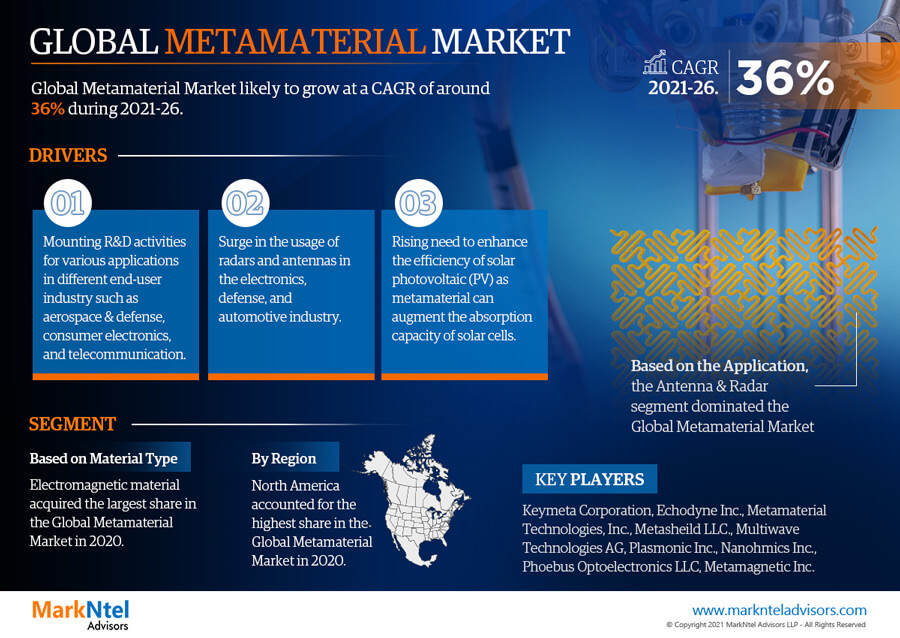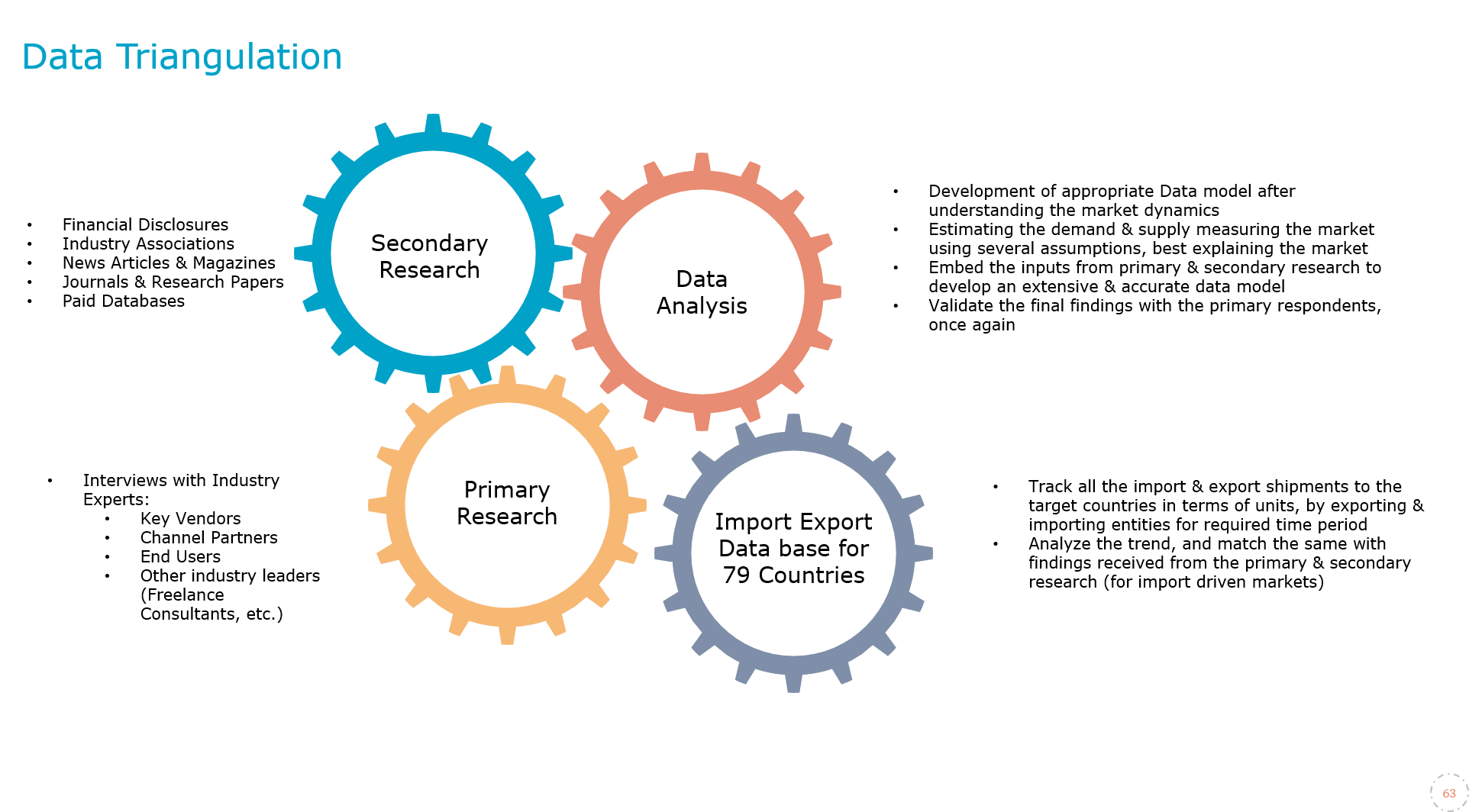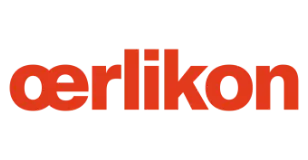
Global Metamaterial Market Research Report: Forecast (2021-2026)
By Material Type (Electromagnetic, Terahertz, Photonic, Tunable, Frequency Selective Surface, Others), By Application (Antenna & Radars, Absorber & Sensors, Super lens, Cloaking De...vice, Display, Windshield, Others), By End-User (Aerospace & Defense, Healthcare, Automotive, Consumer Electronics, Energy & Power, Others), By Region (Asia-Pacific, Africa, Europe, Middle East, North America, South America), By Country (China, Japan, India, GCC, Italy, Spain, Brazil, Canada, U.K., U.S, Mexico, Germany, France, South Korea, South Africa), By Competitors (Echodyne Inc., Metamaterial Technologies, Inc., Keymeta Corporation, Metasheild LLC., Multiwave Technologies AG, Plasmonic Inc., Nanohmics Inc., Multiwave Metacrystal, Phononic Vibes, Metamagnetic Inc., Transsip, Inc., Radi-Cool, Jem Engineering, LLC, Phoebus Optoelectronics LLC, Aegis Technologies) Read more
- ICT & Electronics
- Feb 2022
- Pages 212
- Report Format: PDF, Excel, PPT
Market Definition
Metamaterials are a type of material engineered to exhibit properties that are typically not found in natural materials. Composed of numerous elements fabricated from composite materials like plastics & metals, they provide structure and function. Metamaterials are composed of arrays of small metallic resonators structured on the microscale or nanoscale. Consequently, the materials are organized in patterns with scales smaller than the wavelengths of the phenomena they influence. They acquire their properties from their newly designed structure. Their precise shape, size, geometry, and orientation help them obtain smart properties that can manipulate electromagnetic waves.
The basic concept of metamaterials is to design materials using artificially composed & fabricated structural units to attain the desired functionalities and properties. By engineering the arrangement of these structural units into the desired geometry, one can alter the refractive index of the metamaterial to positive, near-zero, or negative values.
Market insights
The Global Metamaterial Market is anticipated to grow at a CAGR of around 36% during the forecast period, i.e., 2021-26. The growth of the market attributes primarily to the mounting applications of metamaterials in communication technology, including resonators, diplexers, antennas, & filters. In addition to this, the snowballing need for developing efficient power solutions is another prominent factor driving the global market. The growing demand for passive radiant cooling products for power plants and antennas for 5G networks is another crucial aspect likely to infuse the adoption of metamaterials exponentially over the forecast period.
Besides, the rollout of 5G technology in developing countries and the surging number of power facilities are projected to boost the growth of the Metamaterial market across the globe. Moreover, conventional broadband antennas & resonant are being replaced gradually by metamaterial antennas in wireless communications since they can be used seamlessly in emerging applications like radio frequency identification systems.
Additionally, the increasing demand for radars & antennas in the defense sector for safety requirements since they help identify any obstacles that could lead to low visibility conditions are also propelling the overall market growth. Furthermore, the rising wide-range application of antennas & radars across several end-users, including automotive, defense, & electronics industries, is expected to offer lucrative growth opportunities for the Global Metamaterial Market in the years to come.
| Report Coverage | Details |
|---|---|
| Study Period | Historical Data: 2016-19 |
| Base Year: 2020 | |
| Forecast Period: 2021-26 | |
| CAGR (2021-2026) | 36% |
| Regions Covered | North America: USA, Canada, Mexico |
| Europe: Germany, UK, France, Italy, Spain | |
| Asia-Pacific: China, India, Japan, South Korea | |
| South America: Brazil, and Argentina | |
| Middle East & Africa: GCC, South Africa | |
| Key Companies Profiled | Echodyne Inc., Metamaterial Technologies, Inc., Keymeta Corporation, Metasheild LLC., Multiwave Technologies AG, Plasmonic Inc., Nanohmics Inc., Multiwave Metacrystal, Phononic Vibes, Metamagnetic Inc., Transsip, Inc., Radi-Cool, Jem Engineering, LLC, Phoebus Optoelectronics LLC, Aegis Technologies |
| Unit Denominations | USD Million/Billion |
Impact of Covid-19 on the Global Metamaterial Market
The Covid-19 pandemic in 2020 adversely impacted the economy of major countries across the globe, and the Metamaterial Market was no exception. The imposition of lockdown led to the shutdown of manufacturing units that impacted the business operations and caused disruptions in the supply chain of components required for manufacturing antennas.
Moreover, the pandemic severely impacted the global industrial sector due to large-scale manufacturing interruptions & disruptions in raw material & component exports, which, in turn, negatively influenced the market growth. Besides, the pandemic also caused the closure of showrooms & factories and, consequently, led to a decline in automobile sales.
Furthermore, owing to subsequent lockdowns, 5G infrastructure providers postponed their rollout plans, which, in turn, affected the metamaterial market growth. Besides, the trade war between China & the US is also anticipated to negatively impact 5G rollout plans & other related businesses, which might hamper the overall growth of the global market in the coming years.

Market Segmentation
By Applications:
- Antenna & Radars
- Absorber & Sensors
- Super lens
- Cloaking Device
- Display
- Windshield
Of all applications, Antennas & Radars hold the largest share in the Global Metamaterial Market. It owes to the rising demand for communication antennas across numerous applications, including Wi-Fi routers, radar communication, satellite communication, & 5G communications. Metamaterials are widely used in antennas to improve their performance. Due to their negative permeability, they allow antennas to possess various characteristics, such as high directivity, electrically small size, tunable operational efficiency, & improved bandwidth efficiency.
Moreover, the rising usage of antennas for Wi-Fi routers and satellite communication is another crucial aspect escalating the demand for metamaterials in the global market. In addition, the increasing infrastructural developments and construction of corporate offices are infusing the need for deploying Wi-Fi routers, which, in turn, is proliferating the demand for antennas & radars. Nevertheless, the rising demand for lightweight & cost-effective antennas for satellite communication is projected to provide a lucrative growth opportunity for the global market.
Furthermore, snowballing inclination toward microwave applications in the telecommunication sector and the ability of metamaterials to exhibit various refractive properties like negative refractive index & left-handed material makes it indispensable for manufacturing microwave components & high-functioning antennas.
A negatively permeable metamaterial shell is used for enclosing loop antennas in Magnetic Induction (MI) communication systems. The communication range of around 20m can be attained with acceptable data rates using metamaterial-enhanced MI communication systems & pocket-sized loop antennas. Hence, the adoption of metamaterials in remote environments significantly impacts connectivity.
Metamaterials used in antennas help individuals focus six times beyond the diffraction limit at 0.38 μμm. These materials are beneficial in providing antennas to cell phones, which are comparatively five times smaller with a bandwidth range of 700 MHz- 2.7 GHz. Hence, all the aspects cited above indicate the burgeoning demand for metamaterials in antennas & radars during the forecast period.
By End-Users:
- Aerospace & Defense
- Healthcare
- Automotive
- Consumer Electronics
- Energy & Power
Based on the End-User, the Aerospace & Defense sector acquires the largest share of the Global Metamaterial market. To enhance the efficiency of the communication system & maintain privacy, the defense sector requires custom communication solutions. The increasing adoption of metamaterial-based devices, such as antennas, windscreens, EMC shielding, protective layers, and cloaking devices in the aerospace & defense industry is fueling the overall market growth. In addition, increasing bandwidth requirements and the need for secure communication in the aerospace & defense vertical are likely to escalate the demand for metamaterials in the coming years since these materials can tune to different frequencies.
Furthermore, the Healthcare industry is projected to witness considerable market growth during the forecast period. It is due to the increasing use of metamaterials in sensors & imaging devices owing to their excellent properties like the ability to manipulate electromagnetic waves and offer better images that help detect certain diseases. The surging prevalence of various diseases, along with the growing population, provides a profitable opportunity for the Global Metamaterial Market to grow across the healthcare sector in the forecast years.
Recent Trends in the Global Metamaterial Market
- In November 2020, Kymeta Corporation announced the commercial availability of its next-generation antenna for government, and commercial procurement after November 30, 2020. This will unlock the potential of broadband satellite connectivity and cellular networks to fulfill the increasing demand for mobile communications. Kymeta’s next-generation solutions are designed to meet the requirements of defense agencies, government, and commercial customers across the globe.
- In October 2020, Echodyne Inc. introduced EchoGuard CR & RadarHub. EchoGuard CR is a lower-power 3D radar that provides high detection & tracking accuracy in dense semi-urban, urban, and other close-range environments. Also, RadarHub simplifies multi-radar management and deployment.
- In July 2020, Metamaterial Technologies Inc. announced its partnership with ADI Technologies, Inc. to access defense markets in the US, the UK, Europe, and Israel. ADI Technologies offers marketing and consulting services to international companies to provide services and products to government organizations.
- In August 2020, Keymeta Corporation announced the company's recapitalization, coupled with the successful funding raise of approximately $85 million, led by Bill Gates.
Regional Landscape:
- North America
- South America
- Europe
- Middle East & Africa
- Asia-Pacific
Geographically, North America dominates the Global Metamaterial market, primarily due to the burgeoning demand for metamaterials in the aerospace & defense sector of the region. Massive investments & Increasing R&D by several government agencies like NASA, DOD, & DARPA toward developing metamaterial-based antennas shall also drive the regional market in the coming years.
Further, Asia Pacific is expected to register the fastest market growth over the forecast years, primarily due to the increasing expenditure on the defense sector across different Asian countries. Furthermore, a surge in government initiatives to regularly boost the national defense budget in countries like China, India, South Korea, etc., shall further boost the regional market. In the region, China is the largest market for antennas. The surge in the launch of more satellites to enable secure communications is likely to lead to new developments in antennas, which, in turn, would drive their demand and, consequently, the metamaterial market in Asia-Pacific.
Market Dynamics:
Key Driver: Variation in Design Functionalities of Metamaterials
Metamaterials exhibit multiple unique & rare properties achieved from the structure of materials infused into them. Constituent materials, which can be arranged in any pattern, impact electromagnetic radiations and provide unique properties like negative permeability & permittivity to the metamaterial. These properties are otherwise not achievable with conventional materials. The unique properties of metamaterials make them fundamentally valuable across various applications, such as solar panels, communication antennas, windscreens, and medical imaging devices. Thus, the variation in their design functionalities is likely to boost the Global Metamaterials Market in the years to come.
Growth Challenge: High Manufacturing Costs of Metamaterials
The manufacturing of metamaterials is quite a time-consuming & critical process and differs in every application, which becomes expensive. So, it is very crucial to use adequate materials to get the desired properties. Therefore, the increasing cost of manufacturing metamaterials and lack of awareness for choosing the right materials might hinder the growth of the Global Metamaterial Market in the coming years.
Competitive Landscape
According to MarkNtel Advisors, the major leading players in the global Metamaterial market are Keymeta Corporation, Echodyne Inc., Metasheild LLC., Plasmonic Inc., Multiwave Technologies AG, Nanohmics Inc., Phoebus Optoelectronics LLC, Metamagnetic Inc., Multiwave Metacrystal, Metamaterial Technologies, Inc., Phononic Vibes, Transsip, Inc, Radi-Cool, Jem Engineering, LLC, Aegis Technologies.
Key Questions Answered in the Market Research Report:
- What are the primary overall market statistics/estimates (Market Overview, Market Size- By Value, Forecast Numbers, Market Segmentation, Market Shares) of the Global Metamaterial Market?
- What are the industry size, growth drivers, and challenges (region-wise)?
- What are the key innovations, opportunities, present & future trends, and regulations in the Global Metamaterial Market?
- Who are the primary competitors, their key strengths & weakness, and how they perform in Global Metamaterial Market based on a competitive benchmarking matrix?
- What are the key results derived from the market surveys conducted during the Global Metamaterial Market study?
Market Outlook, Segmentation and Statistics
- Impact of COVID-19 on Global Metamaterial Market
- Market Size & Analysis
- By Revenue
- Market Share & Analysis
- By Material Type
- Electromagnetic
- Terahertz
- Photonic
- Tunable
- Frequency Selective Surface
- Others
- By Application
- Antenna & Radars
- Absorber & Sensors
- Super lens
- Cloaking Device
- Display
- Windshield
- Others
- By End User
- Aerospace & Defense
- Healthcare
- Automotive
- Consumer Electronics
- Energy & Power
- Others
- By Region
- North America
- South America
- Europe
- Middle East & Africa
- Asia-Pacific
- By Competitors
- Competition Characteristics
- Market Share & Analysis
- Competitive Metrix
- By Material Type
- Global Metamaterial Market Hotspots & Opportunities
- Global Metamaterial Market Regulations & Policy
- Key Strategic Imperatives for Success and Growth
- Global Competition Outlook
- Competition Matrix
- Company Profile
Frequently Asked Questions
- Introduction
- Product Definition
- Research Process
- Assumptions
- Market Segmentation
- Preface
- Executive Summary
- Impact of COVID-19 on Global Metamaterial Market
- Global Metamaterial Market Trends & Insights
- Global Metamaterial Market Dynamics
- Drivers
- Challenges
- Impact Analysis
- Global Metamaterial Market Hotspots & Opportunities
- Global Metamaterial Value Chain Analysis
- Global Metamaterial Market Regulations & Policy
- Global Metamaterial Market Outlook, 2016-2026F
- Market Size & Analysis
- By Revenue
- Market Share & Analysis
- By Material Type
- Electromagnetic
- Terahertz
- Photonic
- Tunable
- Frequency Selective Surface
- Others.
- By Application
- Antenna & Radars
- Absorber & Sensors
- Super lens
- Cloaking Device
- Display
- Windshield
- Others
- By End User
- Aerospace & Defense
- Healthcare
- Automotive
- Consumer Electronics
- Energy & Power
- Others
- By Region
- North America
- South America
- Europe
- Middle East & Africa
- Asia-Pacific
- By Competitors
- Competition Characteristics
- Market Share & Analysis
- Competitive Metrix
- By Material Type
- Market Size & Analysis
- North America Metamaterial Market Outlook, 2016-2026F
- Market Size & Analysis
- By Revenue
- Market Share & Analysis
- By Material Type
- By Application
- By End User
- By Country
- The US
- Canada
- Mexico
- The US Metamaterial Market Outlook, 2016-2026F
- Market Size & Analysis
- By Revenue
- Market Share & Analysis
- By Material Type
- By Application
- By End User
- Market Size & Analysis
- Canada Metamaterial Market Outlook, 2016-2026F
- Market Size & Analysis
- By Revenue
- Market Share & Analysis
- By Material Type
- By Application
- By End User
- Market Size & Analysis
- Mexico Metamaterial Market Outlook, 2016-2026F
- Market Size & Analysis
- By Revenue
- Market Share & Analysis
- By Material Type
- By Application
- By End User
- Market Size & Analysis
- Market Size & Analysis
- South America Metamaterial Market Outlook, 2016-2026F
- Market Size & Analysis
- By Revenue
- Market Share & Analysis
- By Material Type
- By Application
- By End User
- By Country
- Brazil
- Others
- Brazil Metamaterial Market Outlook, 2016-2026F
- Market Size & Analysis
- By Revenue
- Market Share & Analysis
- By Material Type
- By Application
- By End User
- Market Size & Analysis
- Market Size & Analysis
- Europe Metamaterial Market Outlook, 2016-2026F
- Market Size & Analysis
- By Revenue
- Market Share & Analysis
- By Material Type
- By Application
- By End User
- By Country
- Germany
- The UK
- France
- Spain
- Italy
- Others
- Germany Metamaterial Market Outlook, 2016-2026F
- Market Size & Analysis
- By Revenue
- Market Share & Analysis
- By Material Type
- By Application
- By End User
- Market Size & Analysis
- The UK Metamaterial Market Outlook, 2016-2026F
- Market Size & Analysis
- By Revenue
- Market Share & Analysis
- By Material Type
- By Application
- By End User
- Market Size & Analysis
- France Metamaterial Market Outlook, 2016-2026F
- Market Size & Analysis
- By Revenue
- Market Share & Analysis
- By Material Type
- By Application
- By End User
- Market Size & Analysis
- Spain Metamaterial Market Outlook, 2016-2026F
- Market Size & Analysis
- By Revenue
- Market Share & Analysis
- By Material Type
- By Application
- By End User
- Market Size & Analysis
- Italy Metamaterial Market Outlook, 2016-2026F
- Market Size & Analysis
- By Revenue
- Market Share & Analysis
- By Material Type
- By Application
- By End User
- Market Size & Analysis
- Market Size & Analysis
- Middle East & Africa Metamaterial Market Outlook, 2016-2026F
- Market Size & Analysis
- By Revenue
- Market Share & Analysis
- By Material Type
- By Application
- By End User
- By Country
- GCC
- South Africa
- Others
- GCC Metamaterial Market Outlook, 2016-2026F
- Market Size & Analysis
- By Revenue
- Market Share & Analysis
- By Material Type
- By Application
- By End User
- Market Size & Analysis
- South Africa Metamaterial Market Outlook, 2016-2026F
- Market Size & Analysis
- By Revenue
- Market Share & Analysis
- By Material Type
- By Application
- By End User
- Market Size & Analysis
- Market Size & Analysis
- Asia-Pacific Metamaterial Market Outlook, 2016-2026F
- Market Size & Analysis
- By Revenue
- Market Share & Analysis
- By Material Type
- By Application
- By End User
- By Country
- China
- India
- Japan
- South Korea
- Others
- China Metamaterial Market Outlook, 2016-2026F
- Market Size & Analysis
- By Revenue
- Market Share & Analysis
- By Material Type
- By Application
- By End User
- Market Size & Analysis
- India Metamaterial Market Outlook, 2016-2026F
- Market Size & Analysis
- By Revenue
- Market Share & Analysis
- By Material Type
- By Application
- By End User
- Market Size & Analysis
- Japan Metamaterial Market Outlook, 2016-2026F
- Market Size & Analysis
- By Revenue
- Market Share & Analysis
- By Material Type
- By Application
- By End User
- Market Size & Analysis
- South Korea Metamaterial Market Outlook, 2016-2026F
- Market Size & Analysis
- By Revenue
- Market Share & Analysis
- By Material Type
- By Application
- By End User
- Market Size & Analysis
- Market Size & Analysis
- Key Strategic Imperatives for Success and Growth
- Competition Outlook
- Competition Matrix
- Product Portfolio
- Target Markets
- Target End Users
- Research & Development
- Strategic Alliances
- Strategic Initiatives
- Company Profiles
- Keymeta Corporation
- Echodyne Inc.
- Metamaterial Technologies, Inc.
- Metasheild LLC.
- Multiwave Technologies AG
- Plasmonic Inc.
- Nanohmics Inc.
- Phoebus Optoelectronics LLC
- Metamagnetic Inc.
- Multiwave Metacrystal
- Phononic Vibes
- Transsip, Inc
- Radi-Cool
- Jem Engineering, LLC
- Aegis Technologies
- Competition Matrix
- Disclaimer
MarkNtel Advisors follows a robust and iterative research methodology designed to ensure maximum accuracy and minimize deviation in market estimates and forecasts. Our approach combines both bottom-up and top-down techniques to effectively segment and quantify various aspects of the market. A consistent feature across all our research reports is data triangulation, which examines the market from three distinct perspectives to validate findings. Key components of our research process include:
1. Scope & Research Design At the outset, MarkNtel Advisors define the research objectives and formulate pertinent questions. This phase involves determining the type of research—qualitative or quantitative—and designing a methodology that outlines data collection methods, target demographics, and analytical tools. They also establish timelines and budgets to ensure the research aligns with client goals.
2. Sample Selection and Data Collection In this stage, the firm identifies the target audience and determines the appropriate sample size to ensure representativeness. They employ various sampling methods, such as random or stratified sampling, based on the research objectives. Data collection is carried out using tools like surveys, interviews, and observations, ensuring the gathered data is reliable and relevant.
3. Data Analysis and Validation Once data is collected, MarkNtel Advisors undertake a rigorous analysis process. This includes cleaning the data to remove inconsistencies, employing statistical software for quantitative analysis, and thematic analysis for qualitative data. Validation steps are taken to ensure the accuracy and reliability of the findings, minimizing biases and errors.

4. Data Forecast and FinalizationThe final phase involves forecasting future market trends based on the analyzed data. MarkNtel Advisors utilize predictive modeling and time series analysis to anticipate market behaviors. The insights are then compiled into comprehensive reports, featuring visual aids like charts and graphs, and include strategic recommendations to inform client decision-making









